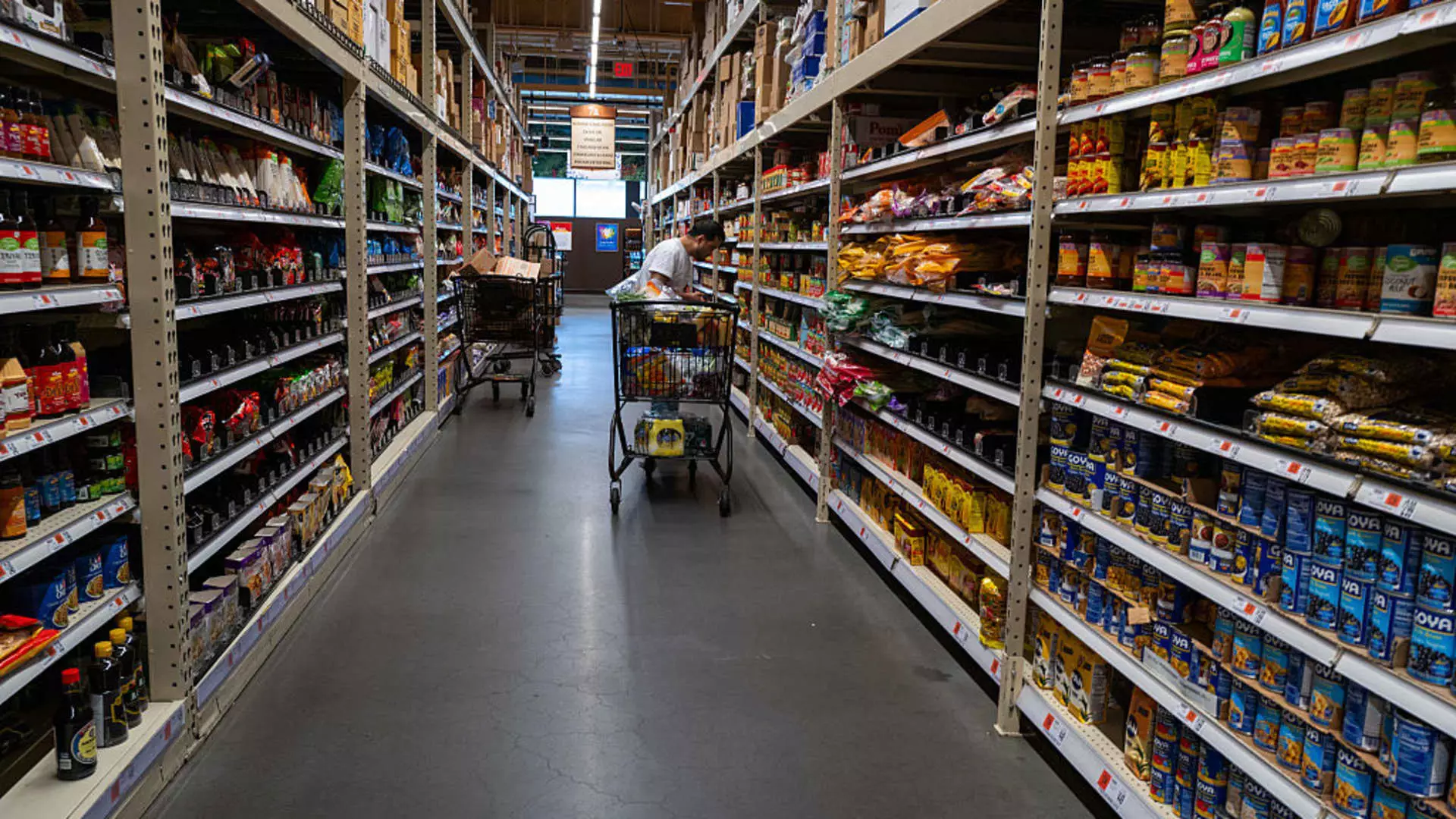In stark contrast to the expectations set by pundits, inflation statistics reported by the Commerce Department revealed a disheartening stagnation in April. The personal consumption expenditures price index—a pivotal gauge closely watched by the Federal Reserve—rose by a mere 0.1%. This result nudged the annual inflation rate to 2.1%, slightly below the previous month’s figures and barely in line with forecasts. The core inflation metric, which excludes volatile sectors like food and energy, offers even bleaker insight; it barely moved from its trajectory of a 2.5% rate, thus effectively maintaining a sense of economic status quo.
This punchy statistic hints at broader economic anxieties. A muted inflation rate might read as stabilization, but it speaks volumes about a consumer base that’s increasingly wary of spending, reflecting a landscape marred by capricious political maneuvers. The sluggish 0.2% uptick in consumer spending suggests a populace that is, perhaps justifiably, tightening its purse strings amid uncertainty. To add to this grim tableau, personal savings leaped to an alarming 4.9%, the highest in almost a year, signaling a fundamental shift in consumer behavior.
The Compounding Issue of Tariffs
At the center of economic discourse, we find President Trump’s tariff strategies, a double-edged sword that has ostensibly aimed at creating balance but has arguably destabilized markets. The imposition of a blanket 10% tariff on all U.S. imports, alongside select higher tariffs, has created waves in both consumer and business sentiment. So far, the anticipated inflationary effect of such policies has been quiet; however, the ghost of potential inflation looms like a specter. There is a pervasive concern among economists that these tariffs—while portrayed as necessary to correct trade imbalances—could inadvertently stoke the flames of rising consumer prices, especially if the labor market continues to falter.
Amid this backdrop, the lackluster response from the stock market and the mixed signals from Treasury yields underline a collective market hesitance. Investors are not just reacting to numbers; they are grappling with the implications of ongoing tariff battles and political uncertainty.
Political Interference and Economic Policy
The interplay between politics and monetary policy has never been more pronounced. Trump’s recent face-to-face with Federal Reserve Chair Jerome Powell left many disappointed, as discussions of interest rate adjustments—crucial during these uncertain times—were notably absent. Instead, the Fed’s commitment to maintain independence in decision-making appears compromised, potentially influencing the forthcoming economic landscape. The insistence on political freedoms in policy-making, while noble, seems overshadowed by the weight of political realities.
These tariff wars and political tussles create an uneasy atmosphere for the Fed. Higher tariffs could yield higher prices and are a thorn in the side for policymakers grappling with the specter of stagflation—a condition from which the U.S. has mercifully remained disengaged since the early 1980s. The societal effects of such conditions would be profound, with families already strained by rising costs facing even more challenging times.
A Path Forward
The question that lingers is whether the political gambles taken by the current administration will translate into a sustainable economic policy or propel us into deeper economic turmoil. As the clouds of tariff-induced uncertainty linger, it becomes increasingly clear that the fabric of consumer confidence is fraying. Tariffs may have been intended as a tool for remediation, but they serve as a reminder of the delicate dance between protectionism and economic vitality.
In an environment where stories of tariffs and trade deficits dominate headlines, the voices of average consumers are often drowned out. Fear breeds reluctance, which could spiral into economic inertia. The essential balance lies between holding the line on fair trade practices while ensuring that consumers feel secure enough to spend. In a landscape that increasingly feels beset by political struggles, the potential for economic growth remains at risk, teetering on the precipice of stagnation or worse.


Leave a Reply